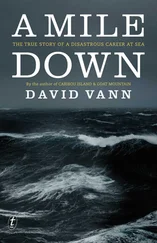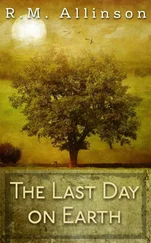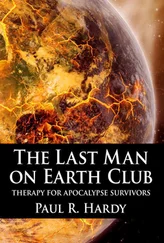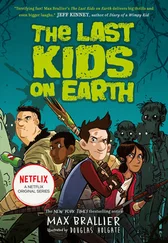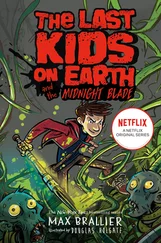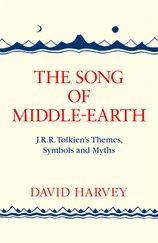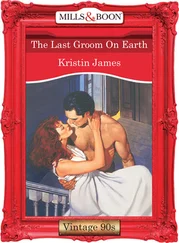David Vann
Last Day on Earth: A Portrait of the NIU School Shooter
Nothing human is foreign to me.
TERENCE (195–159 BC)
I tried to peer around the podium to get a look at him, but the minute I saw him, he turned and saw me. He turned and fired, and he pulled the trigger of the Glock multiple times. He just kept shooting me. I got hit right in the head. It felt like getting hit with a bat. As I fell to the floor face first, all I could think was, “I got shot and I’m dead.” I hit the floor with my eyes closed and a ringing sound in my ear, and I thought this was literally the sound of my dying, going into the darkness.
BRIAN KARPES, survivor of the NIU school shooting, February 14, 2008
AFTER MY FATHER’S SUICIDE,I inherited all his guns. I was thirteen. Late at night, I reached behind my mother’s coats in the hall closet for the barrel of my father’s.300 magnum rifle. It was cold and heavy, smelled of gun oil. I carried it down the hallway, through kitchen and pantry into the garage, where I turned on the light and gazed at it, a bear rifle with a scope, bought in Alaska for grizzlies. The world had been emptied, but this gun had a presence still, an undeniable power. My father had used it on deer. It sounded like artillery, would tear the entire shoulder off a deer hundreds of yards away. I pulled back the bolt, sighted in on a cardboard box across the garage. A box of track for an electric train, and one small rail sticking up filled the scope. I held my breath as my father had taught, squeezed carefully, slowly, heard a metallic click.
With a screwdriver, I separated stock from barrel. I put both pieces down the back of my jacket, cinched under my belt. They stuck out from my collar behind my head but were mostly hidden. I wheeled my bicycle, an old Schwinn Varsity ten-speed, out the back door and through a gate in our fence.
Our neighborhood was silent at 3:00 a.m. Cold still in early April, 1980, a light mist in the air. I huffed up a steep hill in low gear, hot in my father’s jacket, starting to sweat by the time I hit the top. Then coasted down the other side, my ears cold. Big houses, trim lawns, but several streetlights knocked out. Broken somehow, a few remaining shards of glass on the pavement below.
Up the next hill, I pulled off to the side, an undeveloped lot, tall grass and a few oak trees. I hid my bicycle behind one of them and hiked away from the houses until finally I hit a small clearing and had a view. Much of Hidden Valley, in Santa Rosa, California, lay before me.
The rifle went together quickly, and I pulled three shells from my pocket. So much powder packed into the brass. Magnum means too much powder, a bullet sent at much higher speed. I pushed all three shells into the magazine, pulled back the bolt, clicked off the safety. Sat back against the hillside with my feet planted wide, elbows on my knees, forming a base.
Through the scope, I traced houses. Went along their bedroom windows, held crosshairs on their front doors, on taillights of cars in their driveways. Finally zeroed in on a streetlight, rounded and smooth and bright, large in the scope. I could see the bulb inside. Never closer than 100 yards, most of the time two or three times that far, and most of the time, I didn’t pull the trigger. It was enough simply to imagine. But sometimes that wasn’t enough. Sometimes I wanted more. On those nights, I felt the blood in my temples, a pounding my father had called buck fever when we hunted deer, my breath gone, my heart become hard as a fist. I tried to steady, squeezed slowly, and felt afraid of the shock to come.
When I fired, the rifle kicked so hard it sometimes blew me flat on my back. I’d had a.30-.30 since I was nine, was used to rifles, but the.300 magnum was outrageous. If I was lucky, I’d hit my target and also stay upright. Nothing was more beautiful to me than the blue-white explosion of a streetlight seen through crosshairs. The sound of it — the pop that was almost a roar, then silence, then glass rain — came only after each fragment and shard had sailed off or twisted glittering in the air like mist.
Dogs would bark, lights come on. And if anyone in my field of view parted their curtains to look out, I pulled back the bolt to put a new shell in the chamber, sighted in. A man’s face, centered in the crosshairs, lit from his bedside lamp, the safety off and my finger held to the side, just above the trigger. I had done this with my father. When he spotted poachers — hunters trespassing on our land — he would have me look at them through the scope.
These were not my darkest moments that year. I imagined many things, even shooting my classmates at school. I lived a double life. A straight-A student who would become valedictorian. In student government, band, sports, etc. No one would have guessed.
So when I read about Steve Kazmierczak, a Deans’ Award winner who killed five students and himself at Northern Illinois University on Valentine’s Day 2008 and wounded eighteen others, I wondered. He was an A student. His friends and professors couldn’t make any sense of what had happened. This wasn’t the Steve they knew. I had never been interested in mass murderers before and couldn’t have imagined reading a book about one, much less writing one, but I wondered whether Steve might offer a view into why it is that sometimes the worst part of us wins out. Why had I not ended up hurting anyone? How had I escaped, and why hadn’t he?
As I investigated Steve for Esquire , as I gained access to the full fifteen-hundred-page police file that had been withheld from all others — from the New York Times, Chicago Tribune, Washington Post , CNN — I found the story of someone who really did almost escape, who almost managed to avoid becoming a mass murderer, someone trying to make something of himself after a wretched childhood and mental health history, someone attempting the American Dream, which is not only about money but about the remaking of self. His life had been far more terrible than mine, his successes a far greater triumph, but through him I could understand, finally, the most frightening moments of my own life and also what I find most frightening about America.
STEVE GREW UP WATCHING HORROR MOVIESwith his mother. Fleshy, enormous, laid out beside him on the couch. Middle of the day, and all shades are drawn. Dark. She’s protective, doesn’t want Steve to go outside. Won’t let him play much with other children. She’s not mentally right, according to Steve’s godfather, but what can he do? A family feud.
Horror movies and the Bible, those are what animate this living room, those are Steve’s inheritance. A close fit, the plagues, the tortures of Job. God’s sadistic games, teaching his flock to appreciate the value and meaning of their lives. The flesh of no consequence. Late night, his mother can’t sleep. An insomniac with anxiety problems. His father playing out a family history of depression, Steve’s grandfather an alcoholic. So they continue on, still watching.
At school, Steve is an average student. “Steve appears very impulsive and does not want to go back and check his work, therefore there are a lot of errors. At our conference we can discuss ways to help Steve work up to his potential,” writes his third-grade teacher, Ms. Moser. A few years later, Iowa test score fifty-eighth percentile. By now he’s looking for places to hide, tries to find something like the living room, finds it at last in the band practice rooms of Grove Junior High. Plays tenor sax, has a friend, Adam Holzer, skinny and geeky with a nervous smile and round glasses far too large for his face. Long straight hair hanging slack, parted in the middle. Steve no looker himself. Face too skinny at the bottom, almost no mouth or chin, and whenever he focuses on work, he forgets himself. The back of his wrist against his forehead, hand hanging out limply. His mouth open, a piece of food always caught in a gap between his lower front teeth. Other kids call him fag because of the hand. He and Adam get notes to leave class as often as possible, especially gym class, whenever a concert or performance of any kind is on the schedule. One of the rooms is small and has no windows. Here they can talk, eat candy, hide away.
Читать дальше

